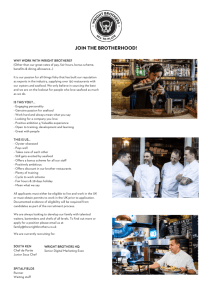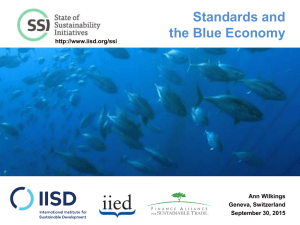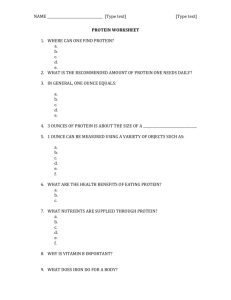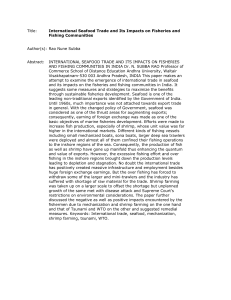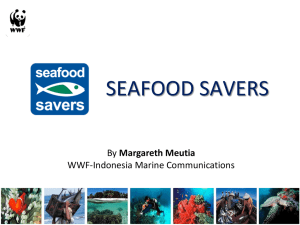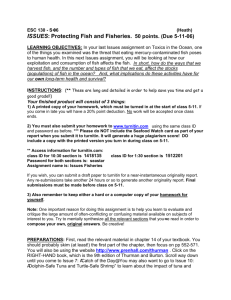Document 11142204
advertisement
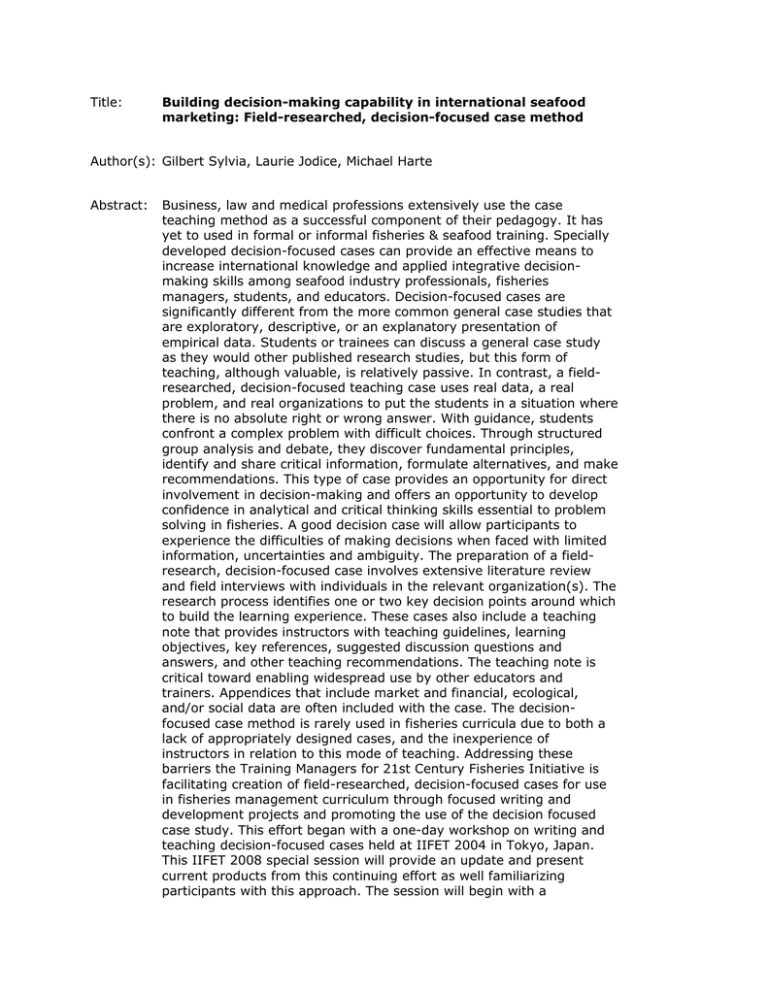
Title: Building decision-making capability in international seafood marketing: Field-researched, decision-focused case method Author(s): Gilbert Sylvia, Laurie Jodice, Michael Harte Abstract: Business, law and medical professions extensively use the case teaching method as a successful component of their pedagogy. It has yet to used in formal or informal fisheries & seafood training. Specially developed decision-focused cases can provide an effective means to increase international knowledge and applied integrative decisionmaking skills among seafood industry professionals, fisheries managers, students, and educators. Decision-focused cases are significantly different from the more common general case studies that are exploratory, descriptive, or an explanatory presentation of empirical data. Students or trainees can discuss a general case study as they would other published research studies, but this form of teaching, although valuable, is relatively passive. In contrast, a fieldresearched, decision-focused teaching case uses real data, a real problem, and real organizations to put the students in a situation where there is no absolute right or wrong answer. With guidance, students confront a complex problem with difficult choices. Through structured group analysis and debate, they discover fundamental principles, identify and share critical information, formulate alternatives, and make recommendations. This type of case provides an opportunity for direct involvement in decision-making and offers an opportunity to develop confidence in analytical and critical thinking skills essential to problem solving in fisheries. A good decision case will allow participants to experience the difficulties of making decisions when faced with limited information, uncertainties and ambiguity. The preparation of a fieldresearch, decision-focused case involves extensive literature review and field interviews with individuals in the relevant organization(s). The research process identifies one or two key decision points around which to build the learning experience. These cases also include a teaching note that provides instructors with teaching guidelines, learning objectives, key references, suggested discussion questions and answers, and other teaching recommendations. The teaching note is critical toward enabling widespread use by other educators and trainers. Appendices that include market and financial, ecological, and/or social data are often included with the case. The decisionfocused case method is rarely used in fisheries curricula due to both a lack of appropriately designed cases, and the inexperience of instructors in relation to this mode of teaching. Addressing these barriers the Training Managers for 21st Century Fisheries Initiative is facilitating creation of field-researched, decision-focused cases for use in fisheries management curriculum through focused writing and development projects and promoting the use of the decision focused case study. This effort began with a one-day workshop on writing and teaching decision-focused cases held at IIFET 2004 in Tokyo, Japan. This IIFET 2008 special session will provide an update and present current products from this continuing effort as well familiarizing participants with this approach. The session will begin with a presentation that provides a brief overview of the field-researched, decision-focused case method, with special attention to features of a quality teaching case and issues of research, writing and teaching. This presentation will also review relevant learning theory and principles and benefits of the methodology for training in fisheries management. It will also cover academic teaching and learning culture issues and lessons learned thus far. The second presentation of the session will introduce several new decision-focused teaching cases being developed under the Enhancing global competitiveness of the U.S. seafood industry: educational case studies in international trade and marketing project. This project is funded by the United States Department of Agriculture (USDA) International Science and Education Competitive Grants Program. The project focuses on the promulgation of researchbased, decision-focused case writing and teaching in international seafood marketing and trade. The case writing fellows associated with the project have received in-depth training and consultation by leading case method experts. They have each researched and developed a decision-focused teaching case about a seafood company facing a significant business decision forced by the economic impacts from the globalization of seafood trade as well as environmental issues, regulatory and changes, and evolving consumer demand/preferences. The decision-makers featured in the cases are managers of firms ranging from small to large-sized seafood companies trading in ITQ and non-ITQ fisheries (salmon, prawns, mussels, herring, squid) in the United Kingdom, New Zealand and Australia. The decisions are highly relevant to economic and marketing issues currently faced by seafood companies and the fisheries sector throughout the world. Case decisions include whether to: continue in the organic niche market, expand into the retail market, enter a joint-venture partnership, develop a regional brand, and expand a plant/operation in a boom and bust fishery. Following the two introductory presentations, audience members will participate in an abbreviated version of one of the cases. This case will be presented in a manner similar to a typical training session for industry managers. Audience members will work in small groups to discuss the critical decision faced by the seafood company and develop solutions. They will then present their solutions. They will also be asked to discuss the merits of the case and reflect on possible venues for the case, issues related to different audiences, and the type of data that they believe should be included in the case (as if they were the writer). The intention is to allow the participants to experience a decision-focused case both as a participant in the learning process and as an educator.
